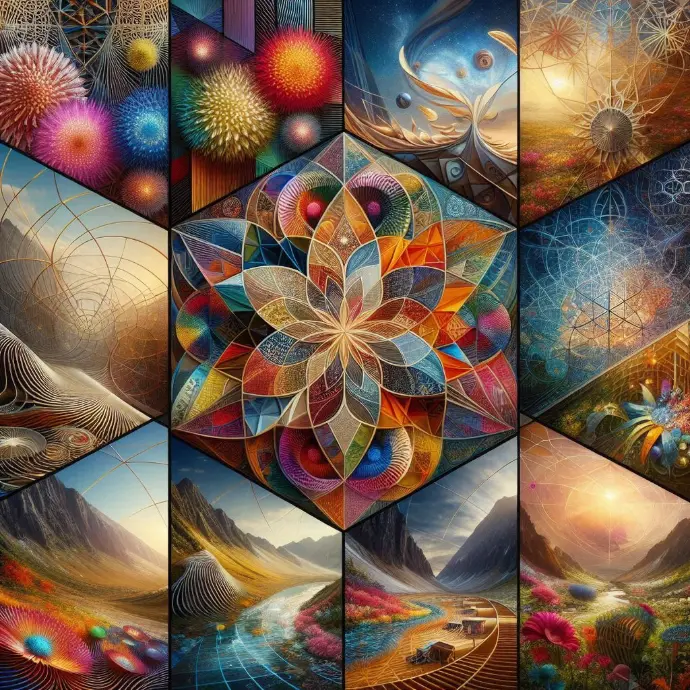
February 15, 2025
The Beauty of Maths in Art and Nature
Introduction
Mathematics is often perceived as a complex and abstract discipline, but its influence extends far beyond numbers and equations. In fact, maths has a profound connection with the world around us, manifesting in the beauty of nature and the elegance of art. This blog explores the enchanting interplay between mathematics, art, and nature, showcasing how mathematical principles create harmony and aesthetic appeal.
The Golden Ratio: Nature’s Perfect Proportion
The golden ratio (approximately 1.618) is a mathematical constant that appears in various natural phenomena and artistic compositions. This ratio is found in the spirals of shells, the arrangement of leaves on a stem, and the branching patterns of trees. Artists and architects have also utilized the golden ratio to create visually pleasing works. For example, the Parthenon in Athens and Leonardo da Vinci’s "Mona Lisa" both incorporate this divine proportion, illustrating the timeless allure of the golden ratio.
Fibonacci Sequence: The Secret Code of Nature
The Fibonacci sequence is a series of numbers where each number is the sum of the two preceding ones (0, 1, 1, 2, 3, 5, 8, 13, ...). This sequence is prevalent in nature, evident in the arrangement of seeds in a sunflower, the pattern of pinecones, and the spirals of galaxies. The sequence not only adds a sense of order and beauty to these natural structures but also inspires artists and designers. For instance, the Italian artist Mario Merz often incorporated the Fibonacci sequence into his installations, highlighting the inherent connection between maths and art.
Tessellations: The Art of Repetition
Tessellations are patterns formed by repeating shapes without gaps or overlaps. This concept is rooted in geometry and can be observed in the natural world, such as the honeycomb structures created by bees and the mosaic-like patterns on the shells of certain turtles. In art, tessellations have been famously explored by the Dutch artist M.C. Escher, whose works feature interlocking shapes that create mesmerizing, infinite patterns. These artworks exemplify the mathematical precision and beauty that tessellations bring to both nature and art.
Fractals: Infinite Complexity in Simple Patterns
Fractals are complex patterns that exhibit self-similarity, meaning each part of the pattern resembles the whole. These intricate designs are found in various natural formations, such as snowflakes, mountain ranges, and the branching of trees. The Mandelbrot set, a famous fractal, has inspired digital artists to create stunning visual representations of these endlessly intricate patterns. Fractals demonstrate how simple mathematical rules can generate extraordinary complexity and beauty in both nature and art.
Symmetry: The Balance of Nature and Art
Symmetry is a fundamental concept in both mathematics and aesthetics, providing a sense of balance and harmony. In nature, symmetry is evident in the bilateral symmetry of animals, the radial symmetry of flowers, and the crystalline structures of minerals. Artists and designers often employ symmetry to create visually appealing compositions. For example, the symmetrical designs of Islamic art and the balanced layouts of Renaissance paintings showcase the beauty and order that symmetry brings to art.
Conclusion
The beauty of mathematics lies in its ability to reveal the underlying patterns and structures of the world around us. From the golden ratio and Fibonacci sequence to tessellations, fractals, and symmetry, mathematical principles pervade nature and art, creating harmony and aesthetic appeal. By appreciating the maths behind these phenomena, we can gain a deeper understanding of the intricate connections between art, nature, and the universe.🌈✨
Leave a Comment
Please note - comments need to be approved before posting.